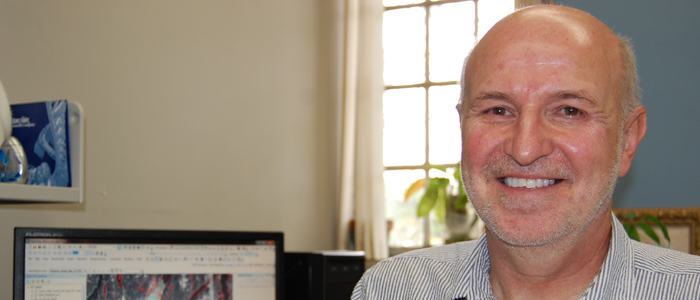Media
Contact
Communications Specialist
Faculty of Engineering
Spencer Engineering Building
Room 2072
Western University
Tel: 519-661-2111 ext. 87015
Email: engineeringcomms@uwo.ca
New tool will help coastal cities minimize effects of changing climate

Western Engineering News | Oct. 16, 2014
By Jason Teakle
As the damaging effects of climate change threaten urban infrastructure, economies and human health across the globe, Slobodan Simonovic is aiming to help municipalities adapt to rapidly changing conditions.
Simonovic, a Civil and Environmental Engineering professor and founder of the Facility for Intelligent Decision Support, is conducting a five-year, $2.5 million interdisciplinary research project, which seeks to minimize the costs of rising sea and river levels in four cities spanning three continents, including Vancouver, Manila, Bangkok and Lagos.
"These cities have been selected because they are exposed to climate change in similar ways," explains Simonovic. "They are all coastal cities and all have major rivers running through them that may pose a risk of flood damage."
To help these municipalities respond appropriately to these threats, with research conducted by an interdisciplinary team of researchers including professors of engineering, economics, political science, geography and health sciences at Western University, Simonovic is developing a computerized tool to integrate various impacts and identify adaptation options specifically designed for each of the four metropolitan areas.
"We will use this tool to identify hazards, assess their impacts and provide advice on what adaptation options are most appropriate for each of the cities," said Simonovic. "If we know the impacts and hazards, we can identify our adaptation options. These could include building a dyke, increasing the number of hospitals or developing evacuation plans. This is about reducing potential damage and increasing resilience."
In Vancouver, there is an estimated $55 billion in costs to infrastructure and the local economy associated with rising water levels, said Simonovic. Approximately 400,000 people could be directly affected by sea level rise and river flooding caused by climate change in that city alone, he said.
"We are talking about figures that are exceeding the capacity of municipalities, provincial governments, and getting very close to the capacity of the federal government," notes Simonovic.
The project, which is nearing its final stage after launching in 2010, initially focused on assessing four separate types of impacts: physical, sea level rise and Fraser River flooding, economic, health and social.
"The tool will put all these impacts together to assess the resilience of the cities to rising sea levels and river flooding," he explains. "We're also looking at the especially vulnerable segments of the population, including the very young, older people and the economically disadvantaged. The options that provide the highest resilience will be suggested to municipal governments.
"We are working closely with the cities and many agencies within them, which are responsible for collecting the data. We also use every possible source of global data available to us. Each city has unique characteristics that will result in different adaptation options. We have had important meetings in Vancouver and Manila, and we will in Bangkok next year.”
Although the tool is being initially developed for four cities, Simonovic said its use could grow once issues in other urban areas are considered.
“Cities will be the primary users of the tool,” said Simonovic. “We are planning to make the tool available to the cities we work with. We hope that our strategies will inform decision makers in each city and give them adaptation options that will maximize each city’s resilience.”
The project will provide solutions to pressing issues, explains Simonovic.
"This is very linked to practical problems and affects people," he said. "This project is deeply rooted in the reality of these cities, the people living in them and how governments are managing these cities."

